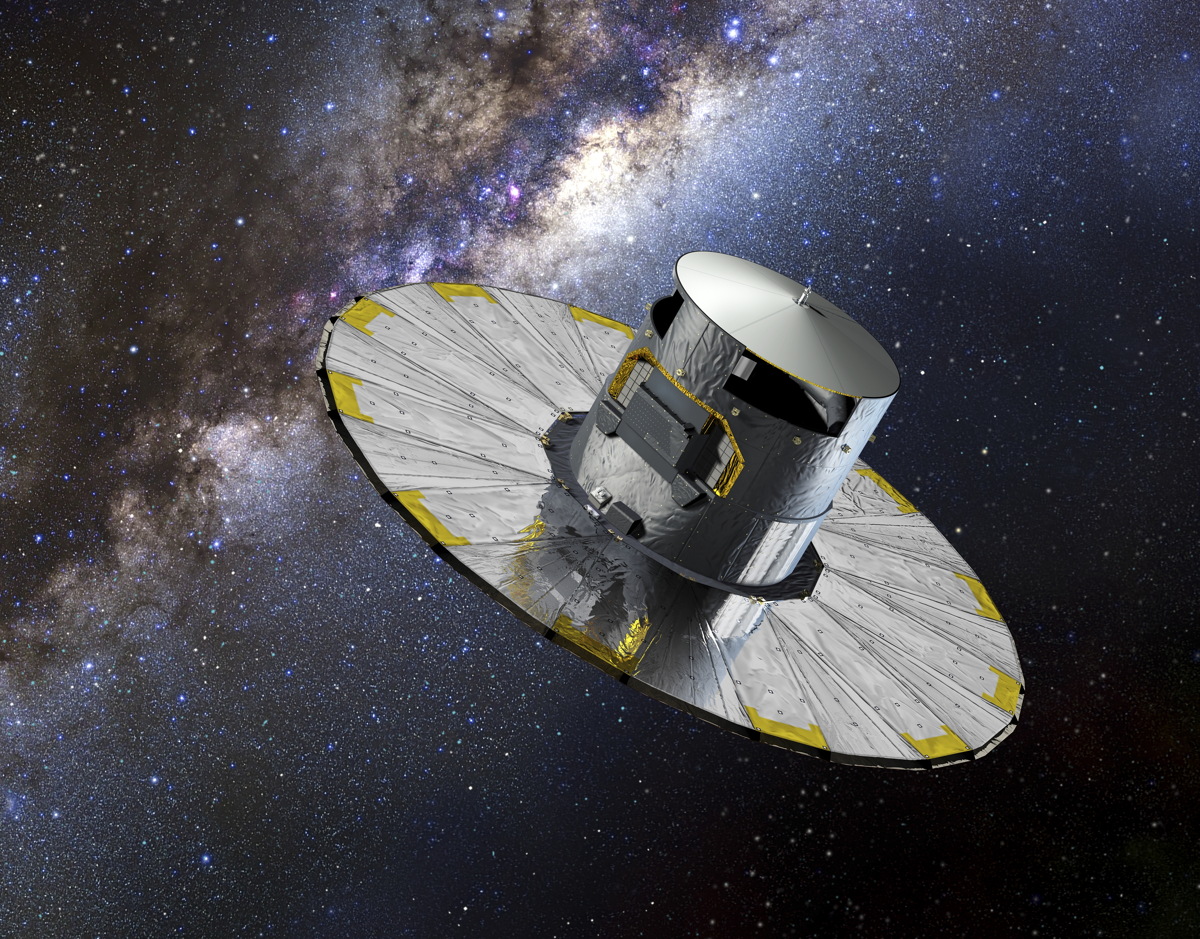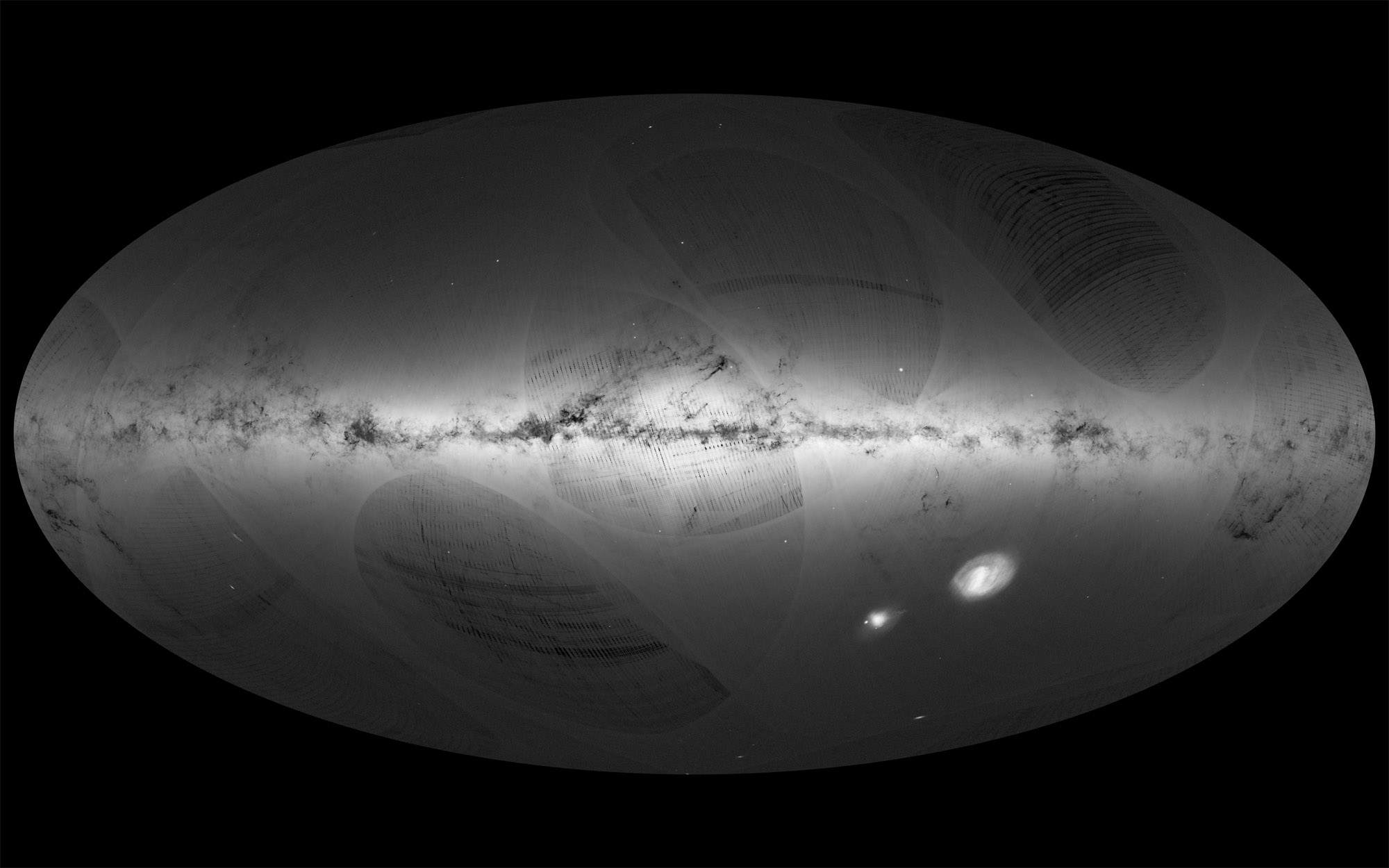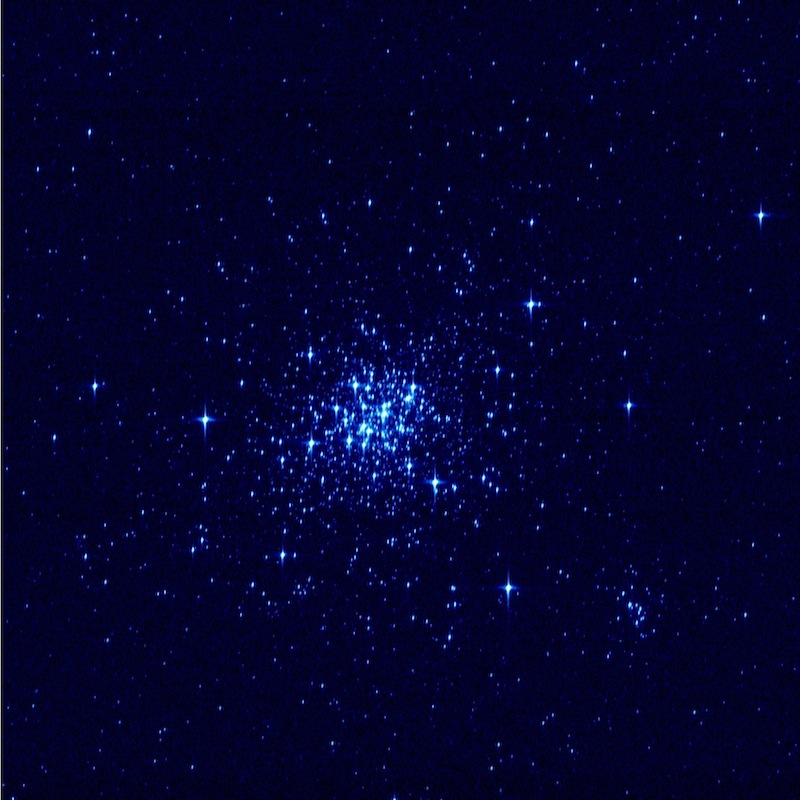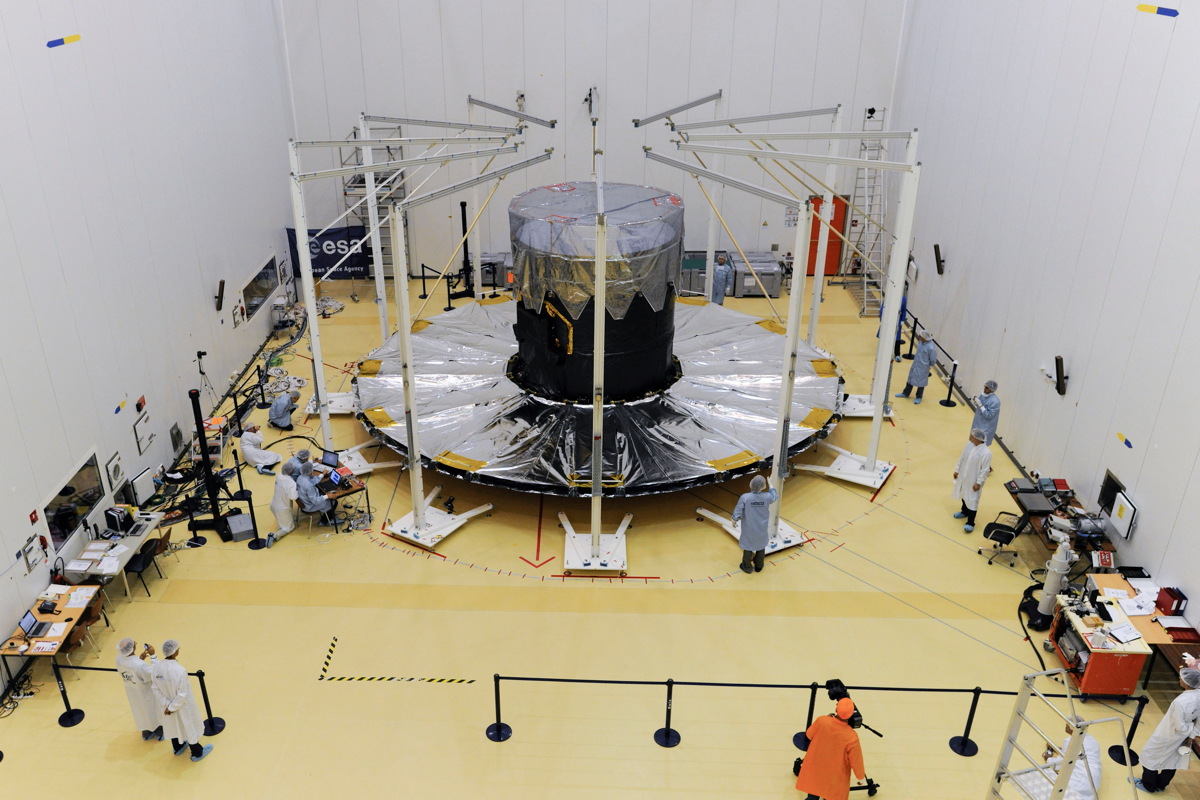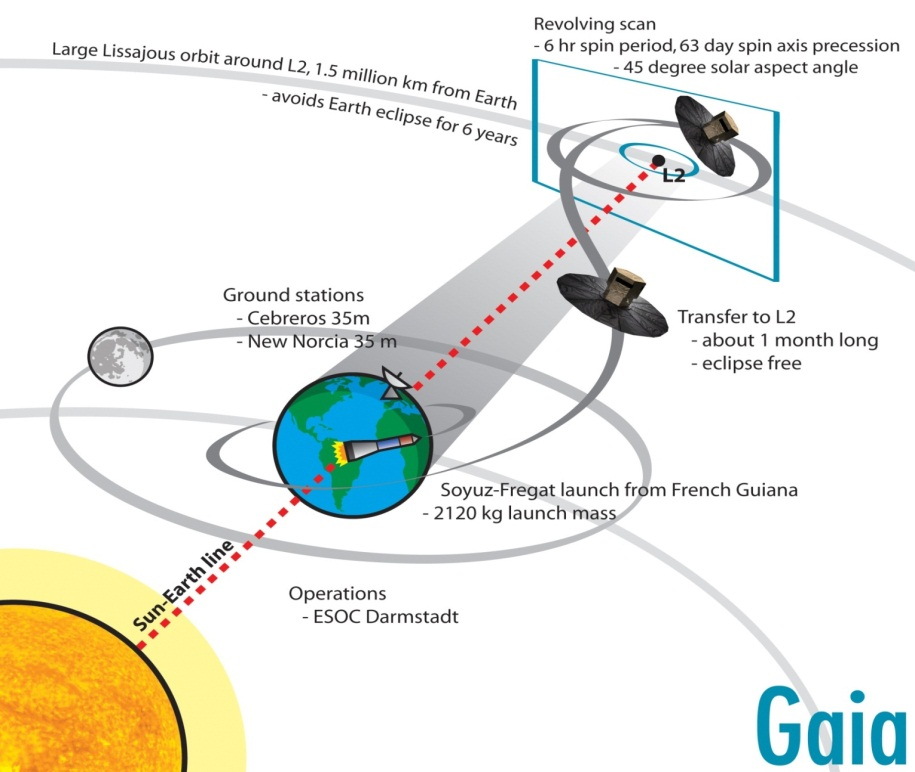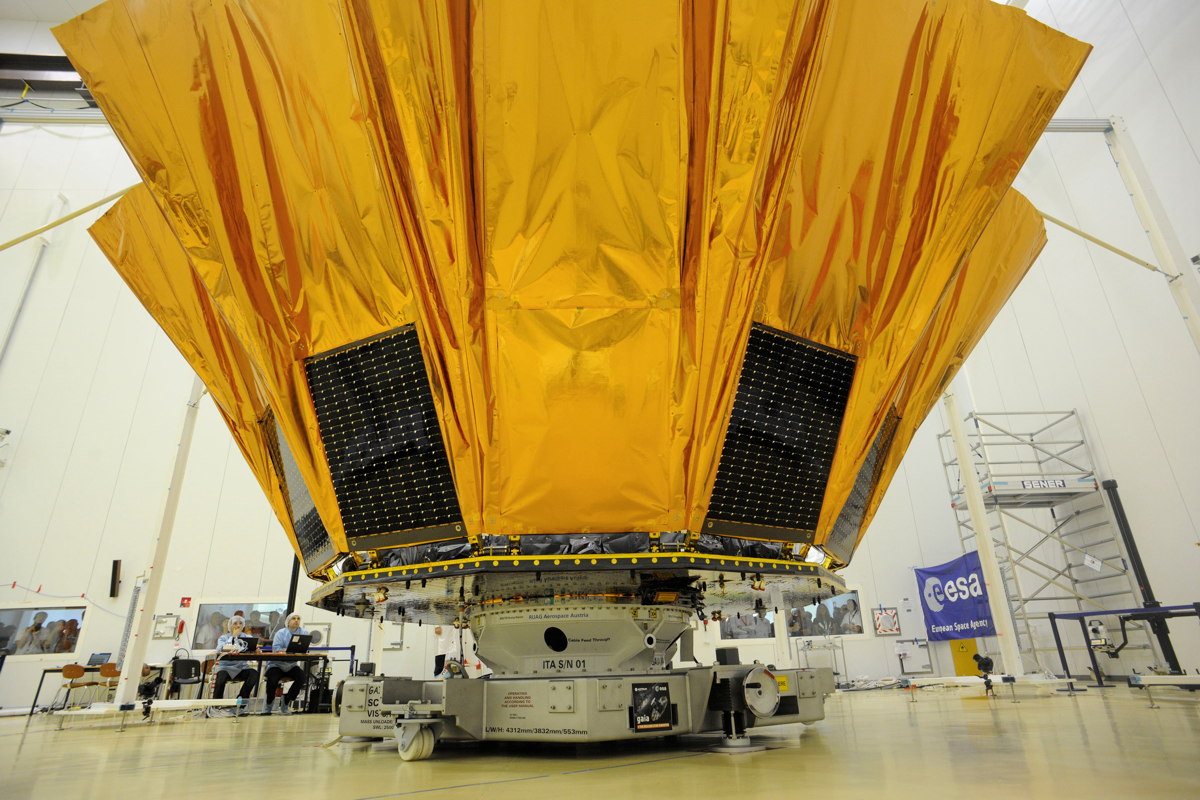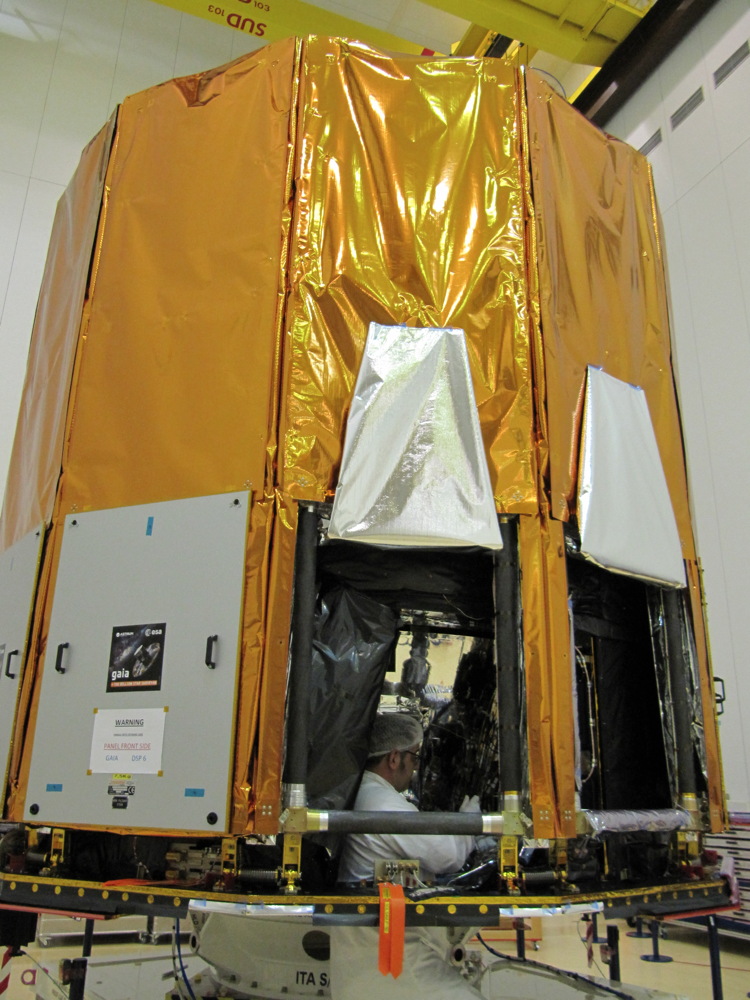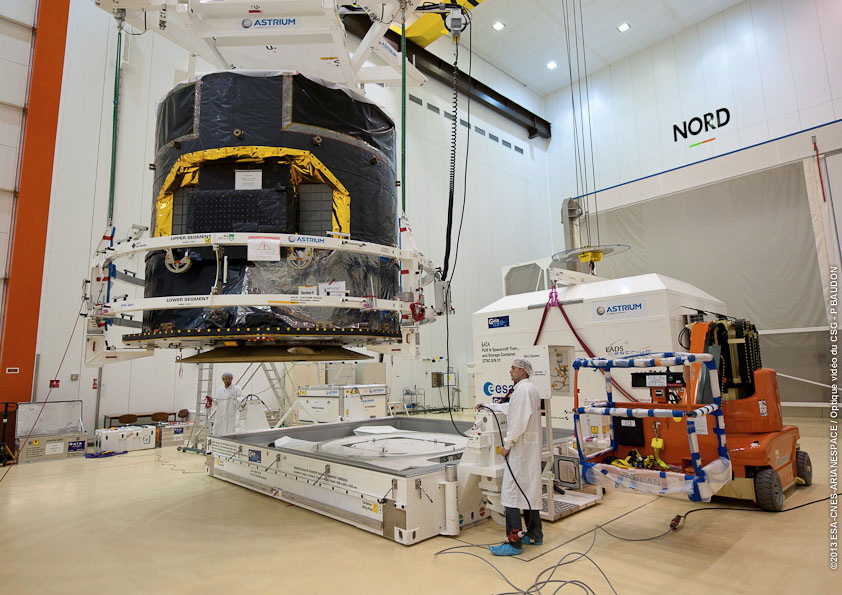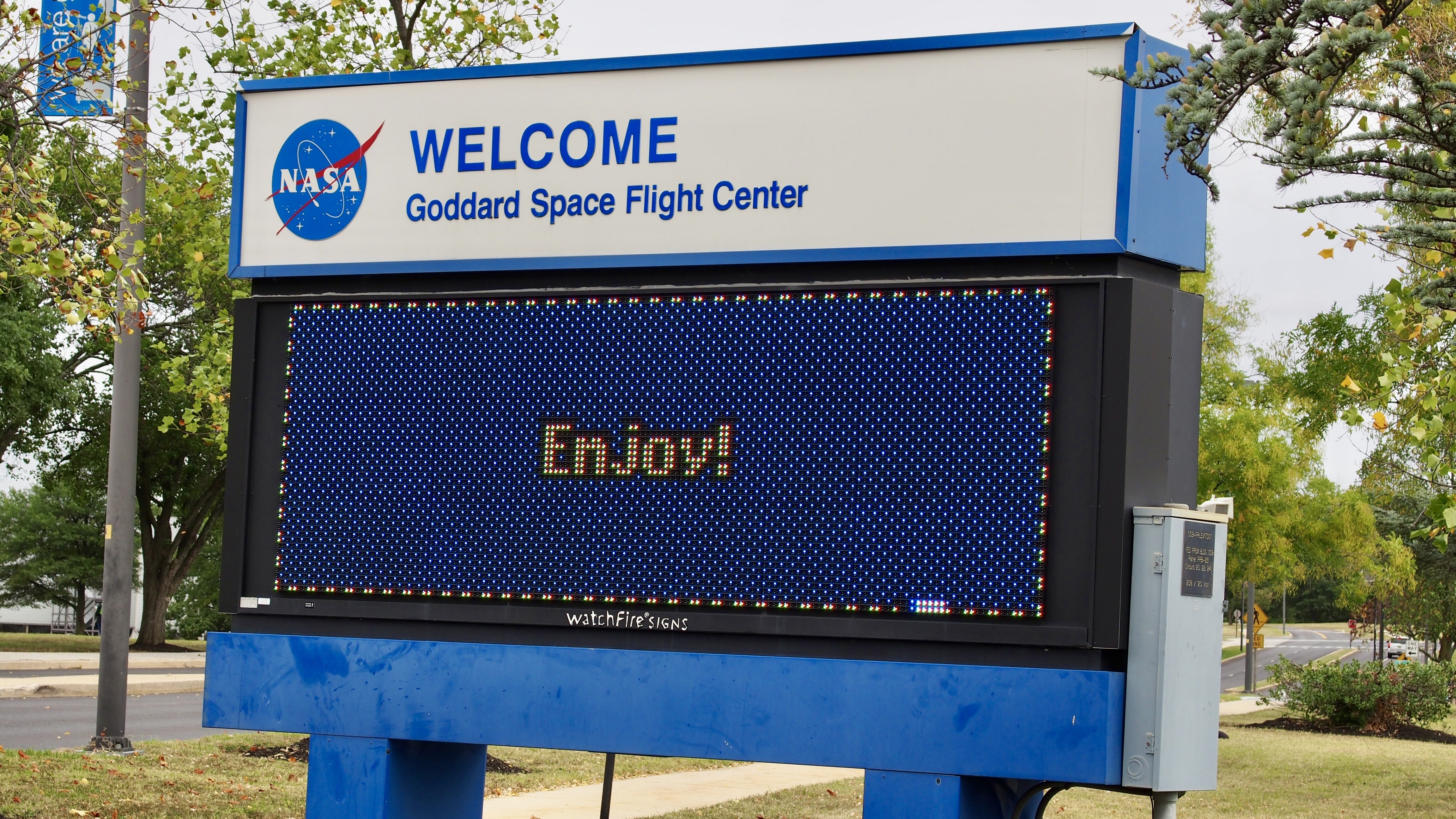Photos: Gaia Spacecraft to Map Milky Way Galaxy
Artist's Impression of Gaia
The European Space Agency's Gaia spacecraft will create a three-dimensional map of the Milky Way, revealing information about its composition, formation and evolution. The mission will measure the position for about one billion stars in our galaxy and local group, with radial velocity measurements for the brightest 150 million objects. Gaia will launch in 2013 on a five-year mission, with a possible one-year extension. (This gallery was updated with new images on Nov. 15, 2016).
Gaia First Sky Map
This all-sky view of the stars in our Milky Way galaxy, as well as neighboring galaxies, take center stage in this sky map by the European Space Agency's Gaia satellite during its first year of operation.
Gaia first map of Milky Way
An annotated version of Gaia's first map of all of the stars in and around the Milky Way galaxy.
Gaia Test Image
A Gaia test image of the young star cluster NGC1818 in the Large Magellanic Cloud. This image was released on Feb. 6, 2014. [Read the Full Story Behind This Image Here]
Deployment of Gaia's DSA
The Gaia Deployable Sunshield Assembly (DSA) is seen during deployment testing in the S1B integration building at Europe's Spaceport in Kourou, French Guiana, on October 10, 2013.
Gaia Spacecraft's Trajectory
This diagram shows how ESA's Gaia spacecraft will arrive at in orbit around the L2 Lagragian point.
Deployment of Gaia's DSA
The Gaia Deployable Sunshield Assembly (DSA) during deployment testing in the S1B integration building at Europe's spaceport in Kourou, French Guiana, on 10 October 2013.
Breaking space news, the latest updates on rocket launches, skywatching events and more!
Gaia in the CCU3 Container
Gaia must be transported in the Conteneur Charge Utile 3 (CCU3). This container is effectively a self-contained cleanroom.
Europe's Gaia Spacecraft Blasts Off
A Soyuz-Fregat rocket carrying the European Space Agency's galaxy-mapping Gaia probe launches from French Guiana on Dec. 19, 2013.
Engineer Almost Inside Gaia Spacecraft
Both Gaia transponders have been re-integrated in the spacecraft, re-connected, and functionally verified. After five days of intensive testing, all results were positive, allowing the re-installation of the solar array panels and of the multilayer insulation (MLI) blankets, which had to be removed for operator access. Kevin Downes, Astrium AIT mechanical engineer, is seen almost inside the Gaia spacecraft.
Gaia Spacecraft in Clean Room at Launch Center
In late August 2013, the Gaia spacecraft was unveiled in the clean room at the launch center of the European Spaceport in Kourou, French Guiana.

Space.com is the premier source of space exploration, innovation and astronomy news, chronicling (and celebrating) humanity's ongoing expansion across the final frontier. Originally founded in 1999, Space.com is, and always has been, the passion of writers and editors who are space fans and also trained journalists. Our current news team consists of Editor-in-Chief Tariq Malik; Editor Hanneke Weitering, Senior Space Writer Mike Wall; Senior Writer Meghan Bartels; Senior Writer Chelsea Gohd, Senior Writer Tereza Pultarova and Staff Writer Alexander Cox, focusing on e-commerce. Senior Producer Steve Spaleta oversees our space videos, with Diana Whitcroft as our Social Media Editor.
